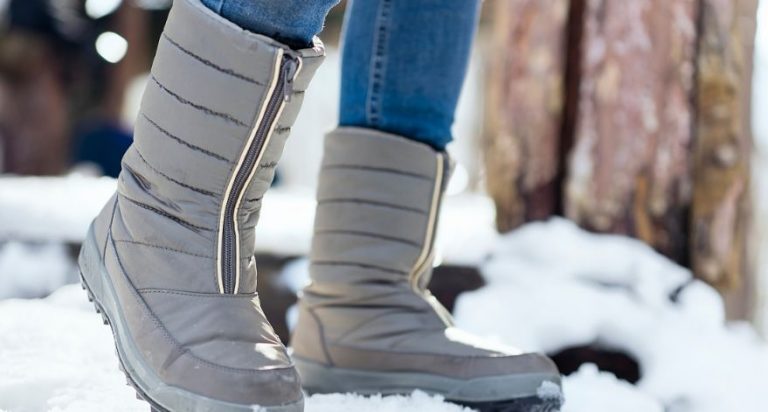How to Remove Salt Stains From Boots
How to Get Salt Off Boots
If you live in a snowy area, you know that getting salt stains on your boots is inevitable. It is important that you are able to clean the salt off your boots as soon as possible to preserve the material.
Whether you have suede, leather, plastic, nylon, rubber, cotton, or wool boots, getting the salt off is easy. High quality boots can be expensive and winter weather can cause a lot of damage. Here are some tips to help preserve the life of your favorite boots.
Suede
Suede can be easily damaged by salt stains. It is necessary to try to clean your shoes as soon as you get home to avoid unnecessary damage. You will need a soft, microfiber cloth, toothbrush, dish soap and cold water.
First, wipe the boot with the soft, dry cloth to remove as much residue as possible. Then, lightly brush the shoe with the toothbrush, being sure to focus on the salt lines. Do not be too rough, as this will damage the suede.
If the stain remains after the brushing, add three drops of liquid dish soap to one cup of cold water. Dip the corner of the cloth in this mixture and gently dab at the salt stains.
Rubbing the shoe might remove the dye and damage the suede. Let the shoe dry away from heat and light, and then brush the shoe with the toothbrush again to restore the suede finish.
Leather
Just like suede, it is important to get the salt off your leather shoes as fast as possible. Salt can dehydrate the leather and ruin the shoe completely. Using a soft, damp cloth, wipe off as much salt and water as possible.
Then, mix one cup of white vinegar with one cup of water. Use a clean, white cloth to wipe your shoes with this mixture. It is important to use a white cloth to avoid transferring dye from the cloth to your shoes.
Repeat this process until all the salt has been removed and then allow your shoes to dry away from heat and light. You can put newspaper inside the shoes to retain their shape and remove any moisture that may have gotten inside them.
When your shoes are dry, you can use a soft cloth to rub olive or coconut oil into the leather to better protect them in the future.
Plastic
For those of you who have invested in a lovely pair of winter crocs, you may have made the best decision. Unlike leather and suede, plastic is hard-wearing and easy to clean.
You simply need a wet cloth to wipe down the shoe. If wiping does not help, you can use a toothbrush and mild soap such as dish detergent to give your shoes a scrub. Be careful to allow your shoes to dry naturally.
Drying them with a hairdryer may heat and damage the plastic, causing the shoes to melt or lose shape. If you are in a rush, you can towel dry your plastic shoes, but make sure they are completely dry before spending time in the sun.
The sun can cause cracks if the wet shoes are left out to dry. It can also make the plastic hard and brittle. This method can also be used on your rubber boots, such as Wellingtons or gumboots.
Nylon
Perhaps you decided sneakers were your best option when you saw the snow this morning. This might have been a great idea, considering how easy it is to clean the salt off them. Most sneakers are made of plastic and a nylon mesh.
You can treat the plastic as above, or you can take the easy way out. Your sneakers should be highly durable, so cleaning off salt stains is as simple as popping them into the washer. The biggest problem you may face is the sound of constant knocking while they bounce around the machine.
To combat this, pop in a few towels to dampen the sound. It is also recommended that you tie the laces before putting them in to avoid knots and frays. Once the shoes are washed, shove some newspaper in them to help maintain the shape and then allow them to air dry.
It may take a while to dry, but adding heat during the drying process may damage the plastic on the shoes.
Wool and Cotton
Great news for anyone who has crocheted their own shoes, or if you happen to own a pair of canvas boots - these are the easiest to clean. If you have the time, you can let the shoes dry and then simply brush off the salt using a toothbrush or dry cloth. However, if your time is limited, you can use a damp cloth to wipe them down.
Cotton and wool are similar to nylon and will not easily pick up water damage. However, it is important to remove the salt as this leads to discoloration, draws out the dye and may cause irreparable damage.
After you have done this, you can wash them in your washer, or you can rinse them off with warm, clean water. Since these types of shoes are likely to have hard rubber or plastic only in the sole, you can sue a hairdryer to dry them. Make sure your hairdryer is on medium heat, to ensure you do not damage the cloth fibers with a high heat.
In Conclusion
Snow season means salt season. To reduce your chances of injury, someone will put salt out on the sidewalk. This ensures that you are less likely to slip on the ice, but it can cause stains to your precious shoes. Cleaning suede and leather is probably the most challenging, since these natural materials tend to get damaged easily.
However, all of the aforementioned cleaning methods are easy and low cost. If you wish to reduce the necessity of cleaning your shoes, you can seal your suede shoes with a suede polish, apply oil to leather and apply a fiber sealant to all other types of shoes.

